150 years of particle accelerators at the ICB!
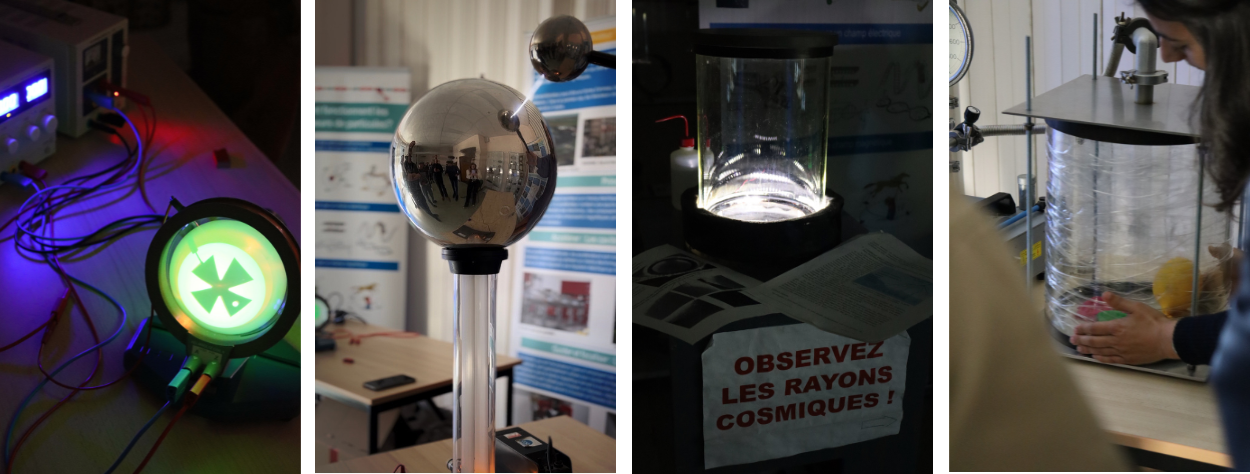
On April 4, 5 and 6, the ICB laboratory welcomed members of the accelerator division of the SFP for an unprecedented exhibition: discovering the world of particle accelerators through playful, spectacular or intriguing experiences.
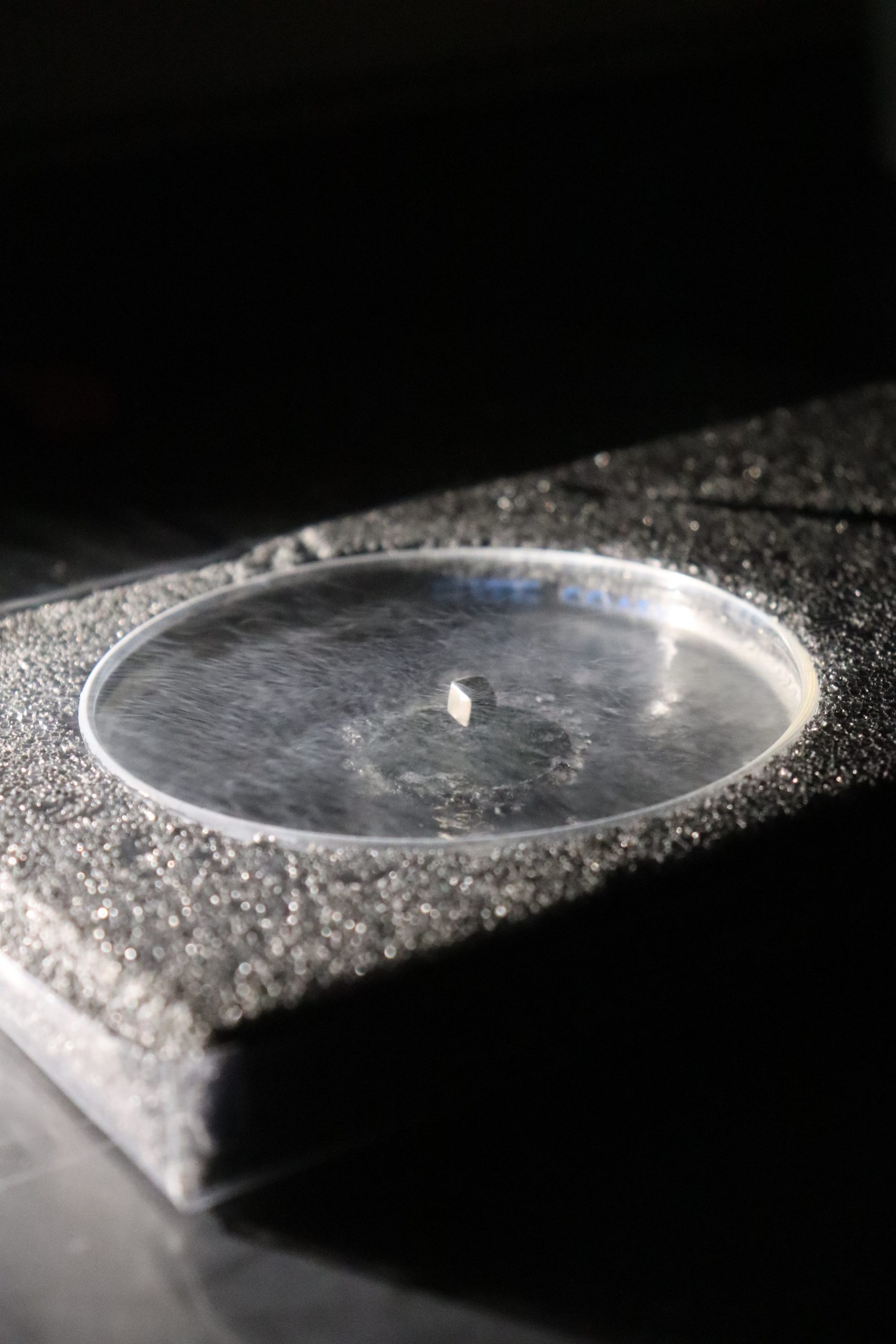
Experiences
Maltese Cross
Reproduction of one of the historic experiments that led to the discovery of electrons: heating a piece of metal (cathode) and applying a high voltage. Appearance of an image which is sensitive to the magnetic field.
Superconducting Levitation I The Superconducting Train!
The train is filled with liquid nitrogen, at -196°C, which cools the disc inside until it passes into a superconducting state: the train then levitates above the rail magnets and can be pushed.
Van De Graaff Generator I An experiment that produces sparks!
The Van De Graaff generator makes it possible to accumulate electrical charges in a charged sphere isolated from the earth by an insulator. As charges accumulate, the electric voltage of the sphere rises to reach several thousand volts. If we approach a second sphere connected to the ground, an electric discharge is produced by creating a spark several centimeters long.
The round of electrons
This fun experience allows you to understand the basic principles of a circular accelerator of the storage ring / synchrotron type.
Inflating a vacuum balloon
A slightly inflated balloon is placed in a vacuum chamber. We then pump the air into the enclosure and we see the volume of the balloon increase: this demonstrates that the volume of the balloon does not depend on the quantity of air it contains but on the balance of the pressures on its walls.
Cloud chamber
A particle detector which shows in the form of contrails the passage of nuclear particles in matter.
Picture It !

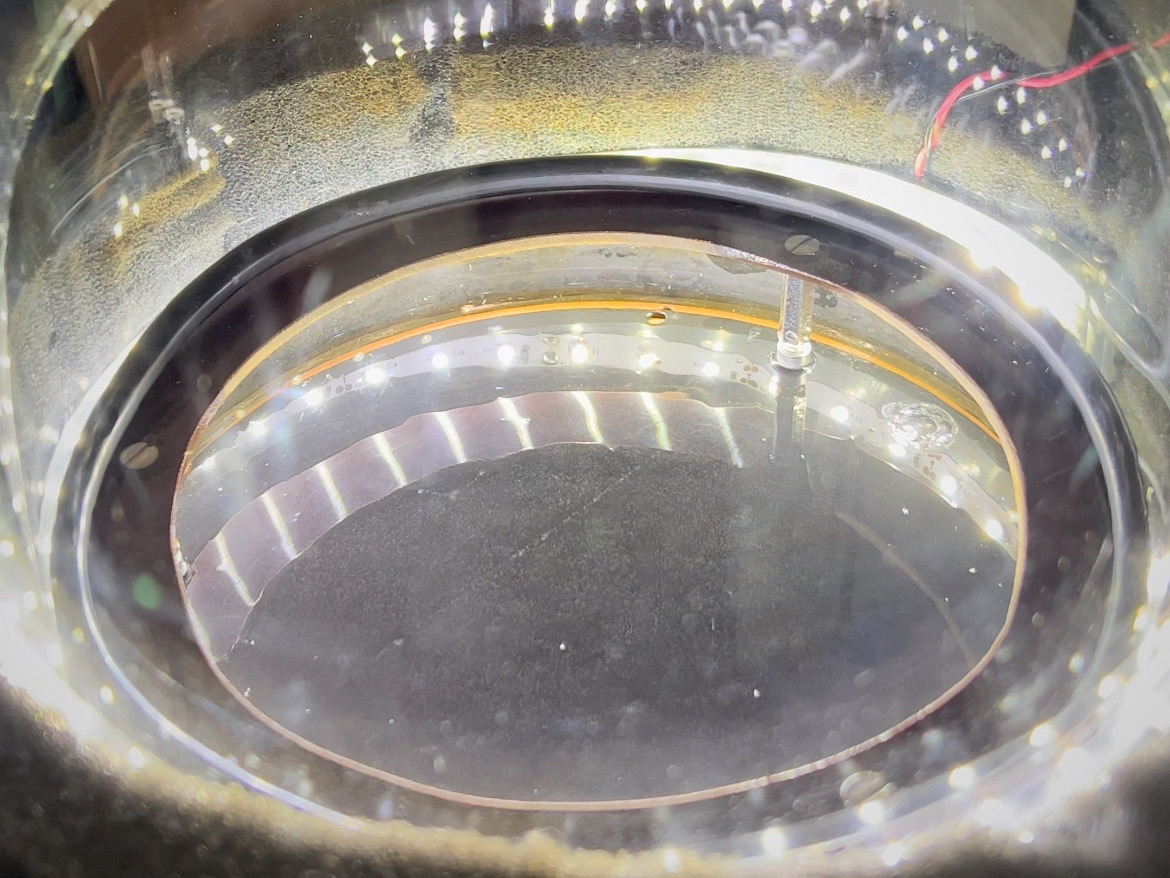
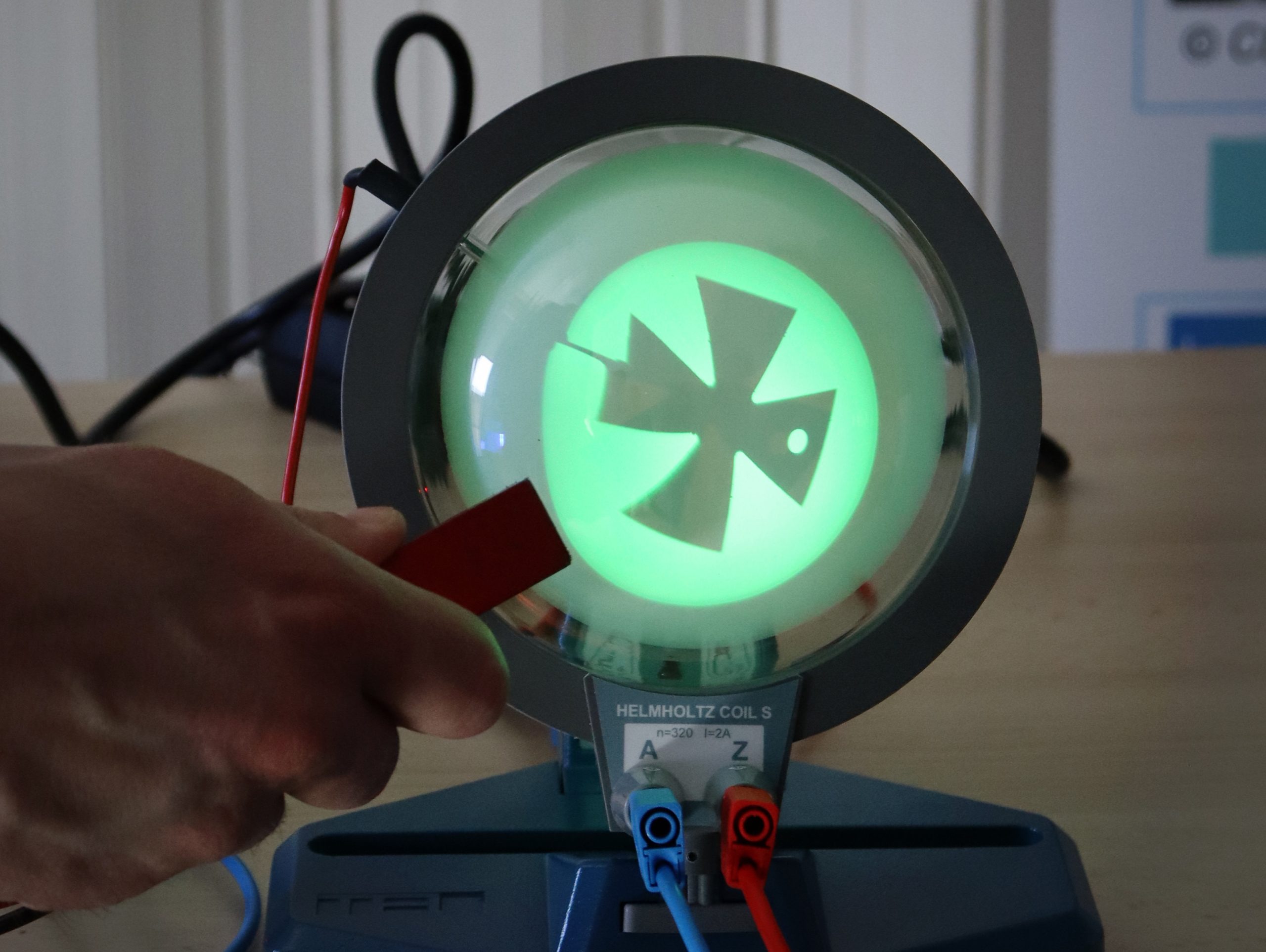
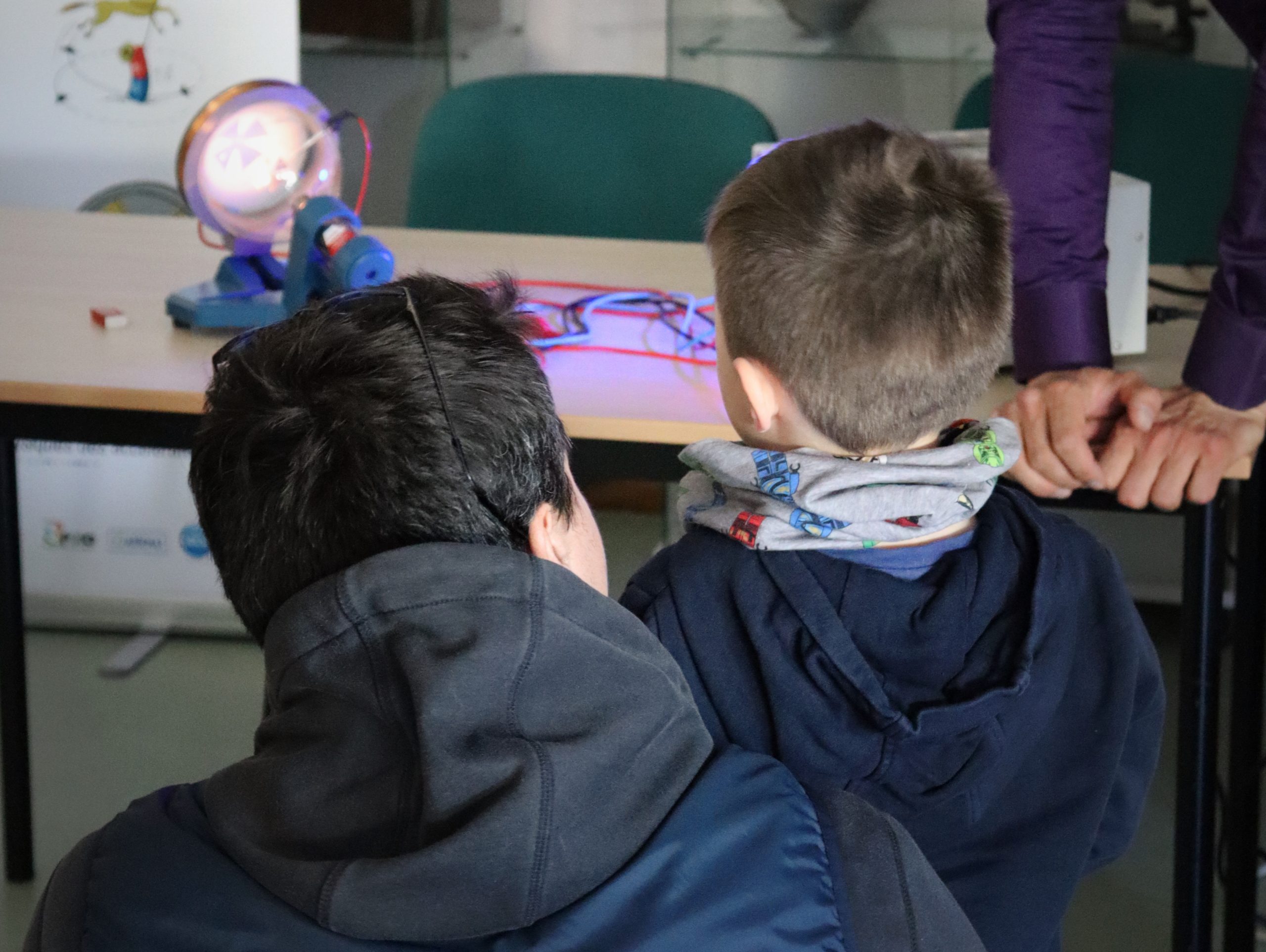

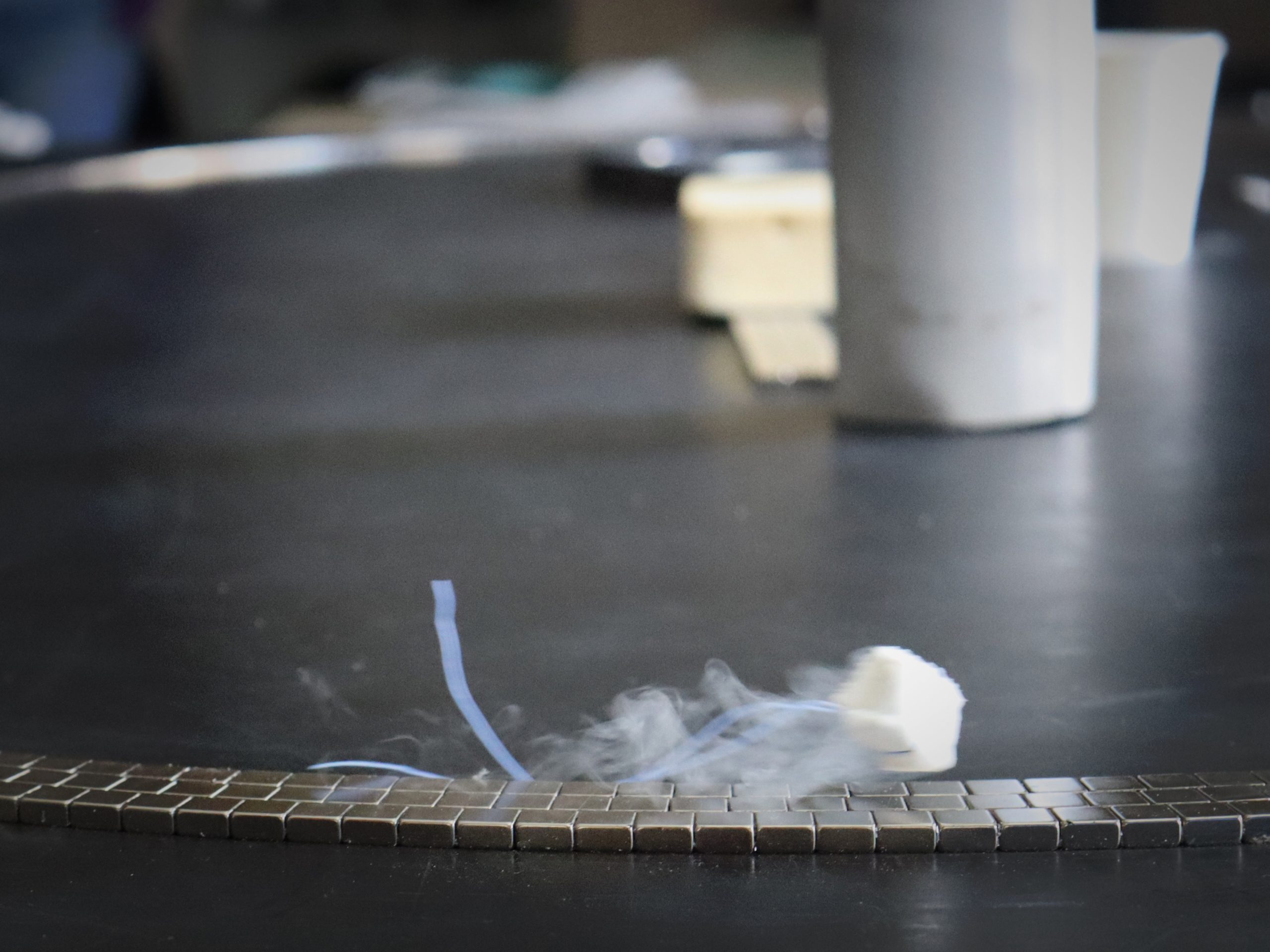
- kc_data:
- a:8:{i:0;s:0:"";s:4:"mode";s:2:"kc";s:3:"css";s:0:"";s:9:"max_width";s:0:"";s:7:"classes";s:0:"";s:9:"thumbnail";s:0:"";s:9:"collapsed";s:0:"";s:9:"optimized";s:0:"";}
- kc_raw_content:
- [kc_row use_container="yes" _id="455791"][kc_column width="12/12" video_mute="no" _id="507967"][kc_spacing height="20" _id="655026"][kc_column_text _id="810400"]
On April 4, 5 and 6, the ICB laboratory welcomed members of the accelerator division of the SFP for an unprecedented exhibition: discovering the world of particle accelerators through playful, spectacular or intriguing experiences.
[/kc_column_text][kc_spacing height="30px" _id="470762"][/kc_column][/kc_row][kc_row use_container="yes" _id="813819"][kc_column width="50%" _id="691476"][kc_single_image image_size="full" _id="561885" image_source="media_library" image="42090"][/kc_column][kc_column width="5%" _id="613108"][/kc_column][kc_column width="45%" _id="558916"][kc_column_text _id="153543"]Experiences
[/kc_column_text][kc_spacing height="9px" _id="369035"][kc_column_text _id="376939"]Maltese Cross
Reproduction of one of the historic experiments that led to the discovery of electrons: heating a piece of metal (cathode) and applying a high voltage. Appearance of an image which is sensitive to the magnetic field.Superconducting Levitation I The Superconducting Train!
The train is filled with liquid nitrogen, at -196°C, which cools the disc inside until it passes into a superconducting state: the train then levitates above the rail magnets and can be pushed.Van De Graaff Generator I An experiment that produces sparks!
The Van De Graaff generator makes it possible to accumulate electrical charges in a charged sphere isolated from the earth by an insulator. As charges accumulate, the electric voltage of the sphere rises to reach several thousand volts. If we approach a second sphere connected to the ground, an electric discharge is produced by creating a spark several centimeters long.The round of electrons
This fun experience allows you to understand the basic principles of a circular accelerator of the storage ring / synchrotron type.Inflating a vacuum balloon
A slightly inflated balloon is placed in a vacuum chamber. We then pump the air into the enclosure and we see the volume of the balloon increase: this demonstrates that the volume of the balloon does not depend on the quantity of air it contains but on the balance of the pressures on its walls.Cloud chamber
[/kc_column_text][kc_spacing height="9px" _id="605786"][kc_column_text _id="680971"] [/kc_column_text][/kc_column][/kc_row][kc_row use_container="yes" _id="670916"][kc_column width="12/12" video_mute="no" _id="433256"][kc_spacing height="30px" _id="920228"][kc_column_text _id="7034"]
A particle detector which shows in the form of contrails the passage of nuclear particles in matter.Picture It !
[/kc_column_text][kc_spacing height="20px" _id="990041"][/kc_column][/kc_row][kc_row use_container="yes" _id="720085"][kc_column width="16.66%" _id="286203"][kc_single_image image_size="full" _id="389766" image_source="media_library" image="42101"][/kc_column][kc_column width="16.66%" _id="545711"][kc_single_image image_size="full" _id="937400" image_source="media_library" image="42096"][/kc_column][kc_column width="16.66%" _id="632344"][kc_single_image image_size="full" _id="926026" image_source="media_library" image="42097"][/kc_column][kc_column width="16.66%" _id="371980"][kc_single_image image_size="full" _id="899333" image_source="media_library" image="42100"][/kc_column][kc_column width="16.66%" _id="63248"][kc_single_image image_size="full" _id="15600" image_source="media_library" image="42102"][/kc_column][kc_column width="16.66%" _id="759397"][kc_single_image image_size="full" _id="317522" image_source="media_library" image="42103"][/kc_column][/kc_row]
